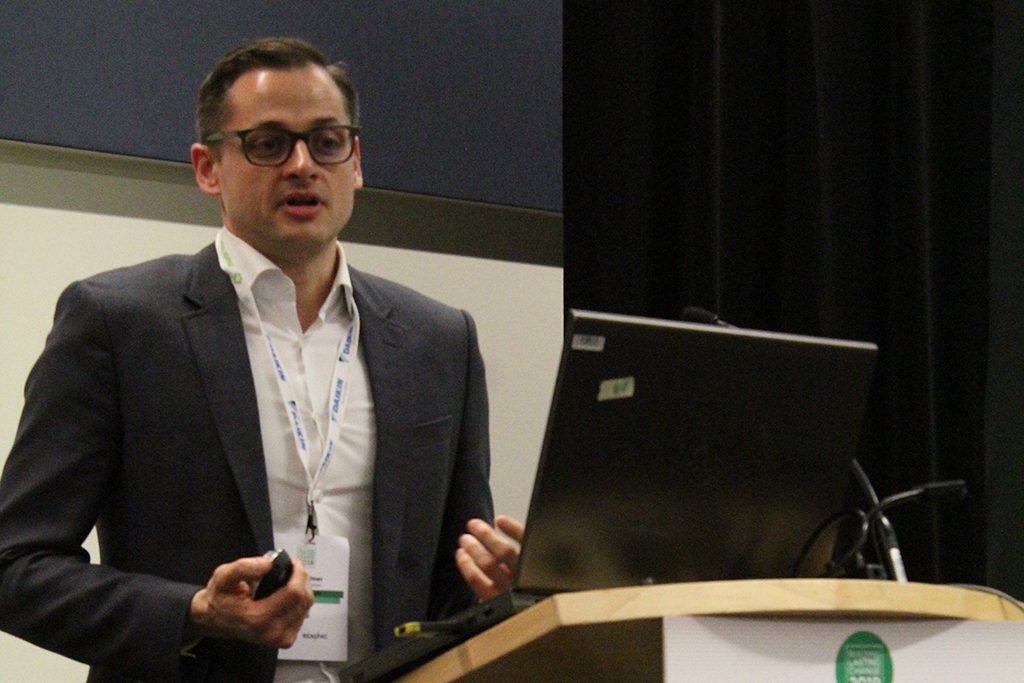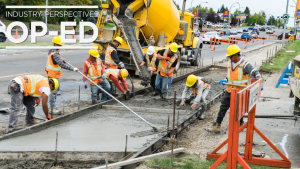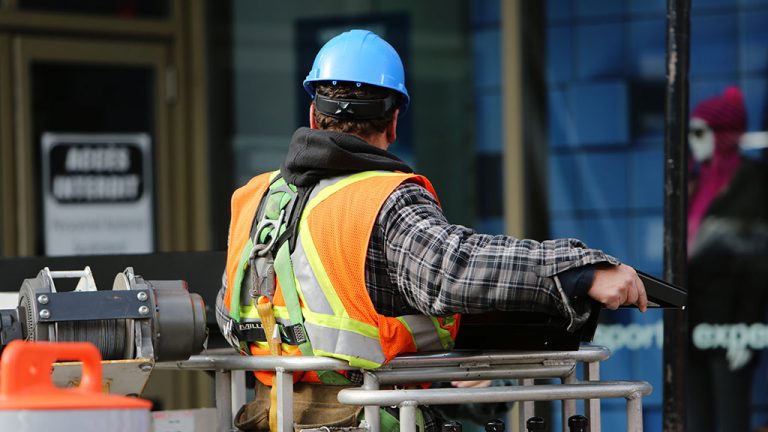VANCOUVER – Edmonton’s Stantec Tower is not only the city’s tallest but also, in terms of construction, one of its smartest.
PCL Construction manager for advanced technology services Chris Palmer and Stantec Associate for Buildings Brent Bauman highlighted some of the advanced data analytics used to build the SKY Residences condominium suites in Stantec Tower at a session held at the Canada Green Building Council’s “Building Lasting Change” conference in Vancouver.
Palmer said while homes are getting smarter and people are carrying powerful computers in their pocket, the construction industry has lagged behind.
“The world is getting smarter. So many of us have smart homes, and building’s themselves are getting smarter in terms of occupancy and energy efficiency. But you can’t have smart cities or buildings without smart construction, and you get smart by using data and analytics,” Palmer said.
PCL took on beefing up worksite intelligence by partnering with Microsoft to create Job Site Insights, a mobile-ready platform that employs sensors to gather worksite data and streamline the construction process.
“The first stage is to install sensors on the job site. The second stage is when Job Site Insights gathers the data, and then the third stage is running analytics that produce actionable insights leading to sustainability,” Palmer said.
Re-use of equipment was a key concern, he said, along with making the platform expandable.
“We wanted to build something device agnostic which could be delivered to the cloud and have sensors that could be reusable from project to project. We also wanted to build an extensible platform, get direct feedback from staff and then add new data and features,” Palmer said.
Construction of the 483 condominium suites at the top of the 66-storey Stantec Tower was the first project to use the Job Site Insights platform, Palmer said, and substantial savings were made as a result of monitoring heater usage throughout the winter season.
“What we ended up seeing is that they could adjust heater usage because they didn’t need them and could turn things off. They had a 46 per cent in natural gas usage on heaters which is $180,000 in fuel savings and reduced power consumption for electric heaters 58 per cent, a nearly $70,000 savings n electricity,” he said.
Applying analytics also reduced the amount of rework required, Palmer said, which is normally seven to 11 per cent of all construction costs and can produce a significant amount of waste.
“What we found is on this project because they were monitoring temperature and humidity conditions and then reacting so quickly they had no freeze-thaw leak incidents, which is virtually unheard of in winter construction, especially with a project of this size. Every other major construction project in Edmonton’s downtown core had at least one of those [incidents] so that alone saved $100,000 in rework avoidance,” he said.
Bauman said while there are challenges to the new approach, there are also “significant rewards.”
“Actionable intelligence is really what we’re talking about,” Bauman said, pointing to costs associated with faults in HVAC systems as a prime concern.
“But with Job Site Insights you can prioritize and send techs to fix the costliest problems first,” he said.
Barriers to adoption of smart construction include a need for buy-in at a management level, laws and regulations that haven’t caught up to the technology and proprietary systems that don’t communicate.
“Proprietary technology is a real problem. Every manufacturer says they can do it all and that might be true if you stick solely with their systems,” Bauman said.
Bauman used wired switches on a wall as an example of a choke point where there are established regulations in place but the process takes time. Shifting to new technology like wireless switches or automation eliminates many steps in construction and reduces the number of trades involved but regulations are not yet in place to address new methods.
“On the regulatory side, there’s not much incentive to adopt new standards and that’s a real challenge,” Bauman said.
Palmer added while the Job Site Insights platform is currently only being used within PCL, that could change in the future.
“We saw a need within PCL [for the platform] but we really see a need within the larger construction industry. We’re looking to all avenues to bring this to market and help the industry as a whole,” Palmer said.











Recent Comments
comments for this post are closed